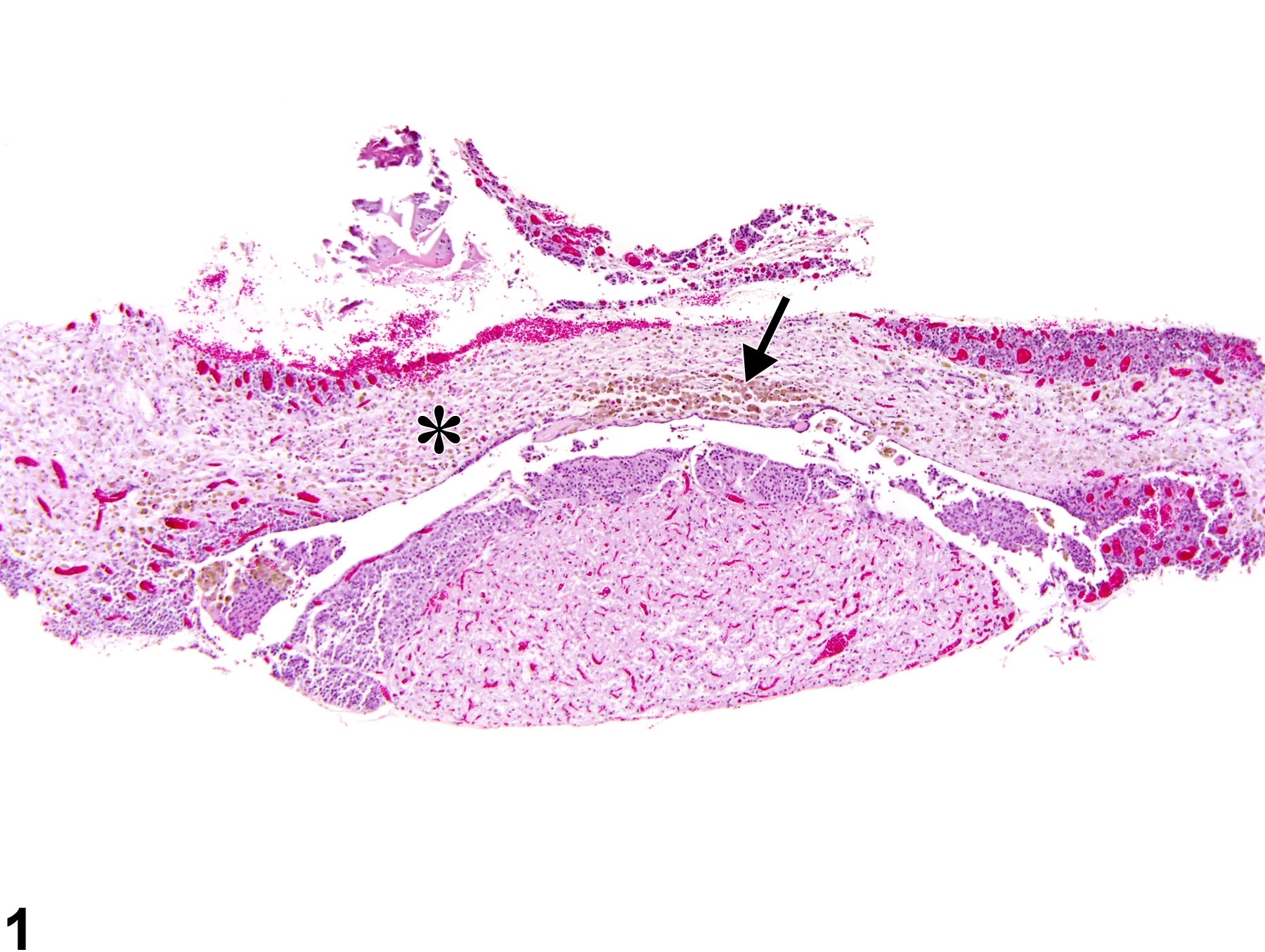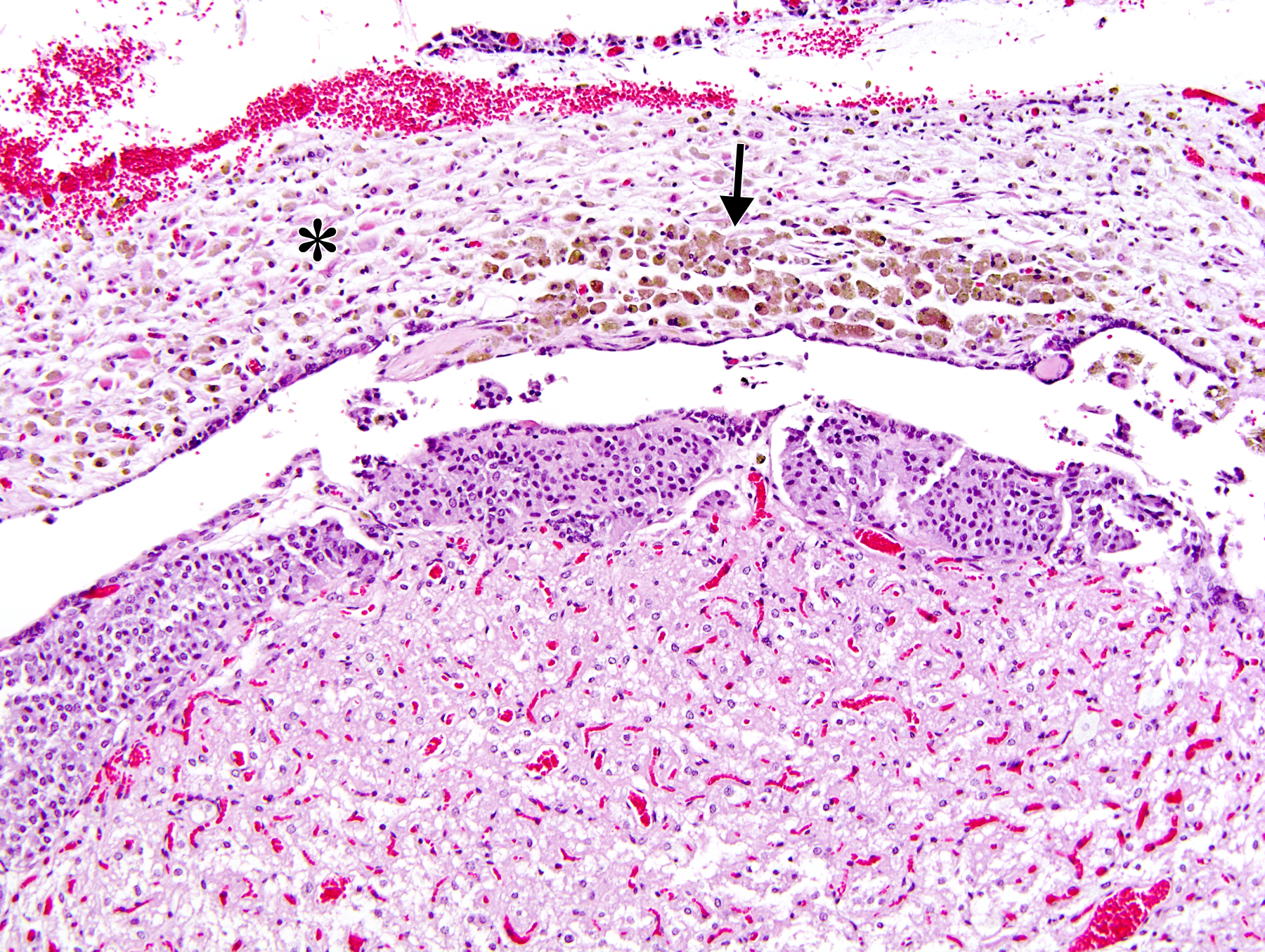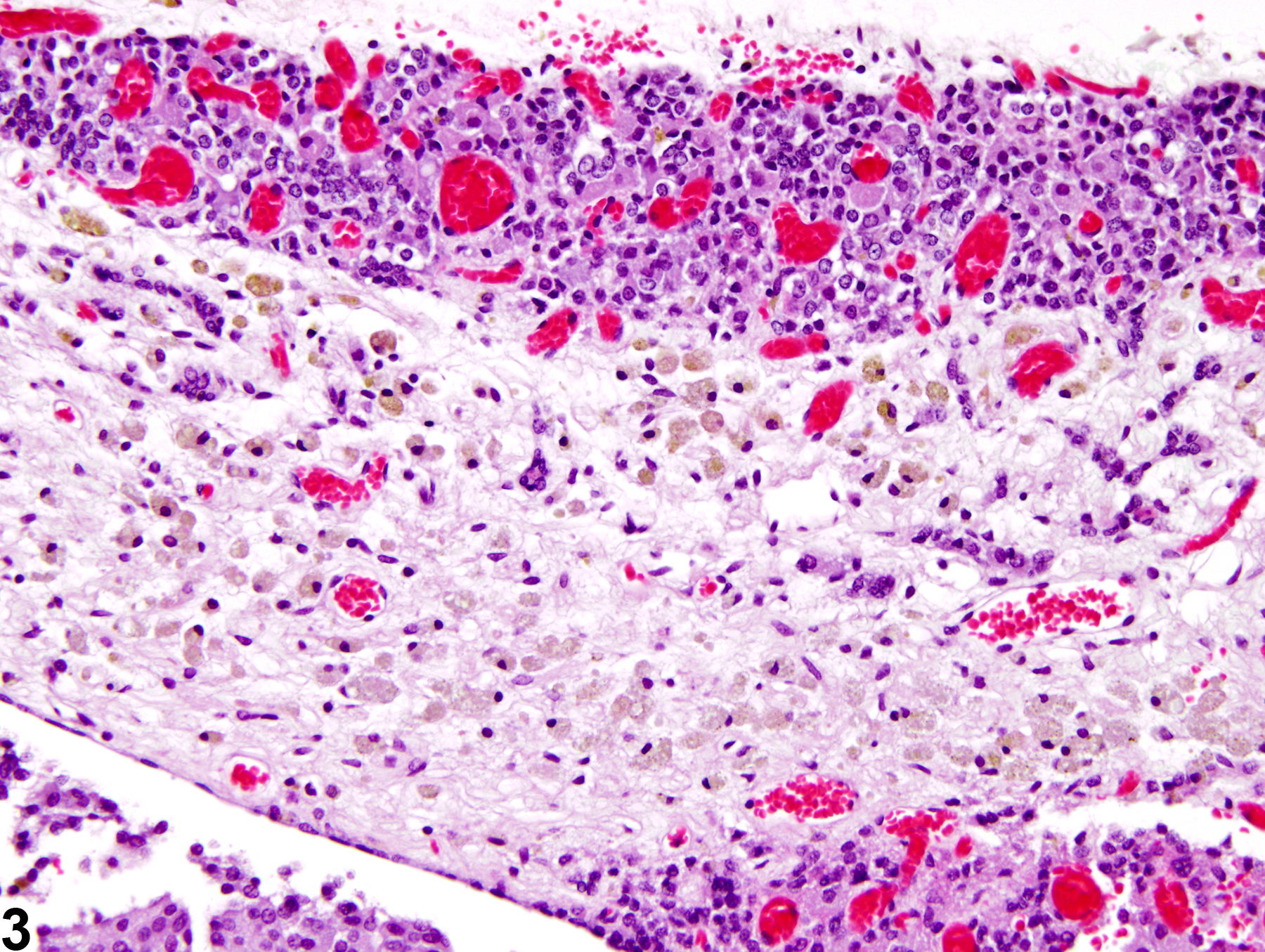Endocrine System
Pituitary Gland, Pars Distalis - Atrophy
Narrative
Daniel PM, Prichard MM. 1956. Anterior pituitary necrosis; infarction of the pars distalis produced experimentally in the rat. Q J Exp Physiol Cogn Med Sci 41:215-229.
Full Text: http://ep.physoc.org/content/41/3/215.long
Pituitary Gland, Pars distalis - Atrophy in a female F344/N rat from a chronic study. The pars distalis (asterisk) is reduced in size and contains a focal aggregate of yellow-brown pigment (likely hemosiderin) within macrophages (arrow).





